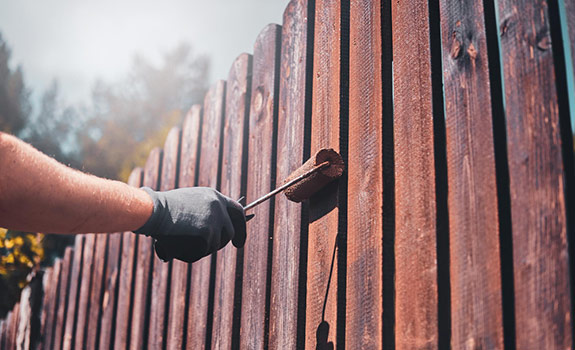No matter how small or large your home or property, restoration is important if it was hit by damage such as a storm, fire, flooding, or mold. Sometimes, damage can be caused by something so common such as water. Damage brought by water can affect not only the structural integrity of a property but also the health of the residents as well. Whatever damage your home has experienced, its restoration is important. There are some things you need to know about home restoration.
#1 Prevent More Damage
Before going any further and doing anything else, you need to stop the damage fast and prevent it from becoming worse. You’d want to ensure the safety of everyone all the time. After a storm, for example, you can move your things away from water to make sure that it won’t cause danger or damage. Knowing what to do after a disaster will help minimize damages. Calling a restoration services company will be a great help. There are also online websites that you can check on to see what services would be beneficial for you and your home.
The following are some things you can do to prevent more damage after a disaster:
- Check that your family is safe from fire, flood, or collapsing buildings.
- Cooperate and follow instructions from authorities or rescue squad.
- Drive or walk carefully while looking for food, shelter, transportation, clothing, medical help, and medical supplies.
- Before entering your property, check for structural damage on the stairs, foundation, roof, and chimney.
- If you have any doubts about the safety of your property, it’s best to have it inspected by a professional. When entering your property, it’s best to wear protective clothing, rubber gloves, and boots.
- Avoid carrying lanterns or torches and use a flashlight instead.
- Stay away from damaged or fallen electrical wires as these may still be live.
- Watch out for dangerous animals like snakes, which could have come inside your home with the floodwaters.
- Watch out for splinters, nails, falling objects, and holes in floors or walls.
- When doing maintenance checks and repairs, always follow safety precautions. Wear puncture-resistant gloves for home maintenance and protective clothes. If you have to handle mold, dust, or chemicals, use a mask or respirator and a pair of goggles. You don’t want to bring harm to yourself as you work to prevent damage to your property.
#2 Water and Food Sanitation after a Flood
If you’re flooded or experienced water damage at home, your water and food may need sanitation before use. Avoid directly using your water for cooking, drinking, or washing until your local water company or public health department declares that your water source is safe. Until then, you may sanitize the following first before you use them:
- Food. Commercially prepared foods in pouches or cans can be used if they’re not damaged. However, you should thoroughly wash the cans, rinse, and disinfect them before storing them back. Use a tablespoon of bleach for every gallon of clean water for disinfecting.
- Water. Strain water using a filter or clean cloth. You should then boil the strained water vigorously for one full minute and allow it to cool. If there’s no way for you to boil the water, you can use unscented liquid chlorine bleach by adding eight drops or one-eighth teaspoon for every gallon of strained water.
- Utensils. Throw away plastic utensils, baby bottles, pacifiers, and nipples. You should also discard wooden spoons and cutting boards that have been in contact with floodwaters. However, you can keep metal and ceramic utensils. Wash ceramic and metal utensils, pans, and dishes using warm soapy water. Sanitize the utensils by boiling them in clean water or placing them in a sanitizing solution of one teaspoon chlorine to one quart of water for fifteen minutes.
#3 Clean Out and Remove Damage
Ensure that you follow safe work practices when cleaning up. Cleaning steps may include removing standing water, getting out debris and mud, or getting your things out.
#4 Clean and Decontaminate Items
In doing this step, ensure that the safety of the people around is prioritized. Check the things that were damaged by the disaster and note if they can still be saved. If the item can’t be completely clean, it needs to be discarded.
#5 Evaluate if Restoration is Possible
Reflect if your property is worthy of restoration. If the damage is so severe, it’s usually more practical to construct a new house on your lot. However, if the disaster has been traumatic for you, it may be difficult for you to stay in the same place.
- For Fire Damage. Restoring a fire-damaged home starts with an inspection of your home’s condition. This includes looking for signs that indicate your house is unstable, making it unsafe for living in. During an inspection, walk with the contractors and take note of what they say. You may get information such as the needed repairs and the estimates for the job. If the house is determined unsafe, your house can’t be restored. Determine if your home insurance will take care of it.
- For Water Damage. For a water-damaged home, a visual inspection from a professional is also required to determine if your home needs restoration. During the inspection, this is the best time to document the damage and take note of what inspectors say. Again, take note of the repairs and work that needs to be done to your property including the estimates.
Inspect your house with a professional to see if restoration is still possible but if restoration isn’t a feasible option, then it’s best to move on. You can ask the help of a real estate agent in selling your damaged property and in finding a new place for you.
#6 Design a Work Plan
Part of restoration is creating a work plan, which includes determining the tasks and supplies needed for this step. Take note if you need professionals such as plumbers and electricians for the restoration. Then, make a list of the tools and supplies you’ll need. Finally, consider how you’ll dispose of the debris.
#7 Contact Your Insurance Company
Not all home insurance covers all disasters. For instance, flooding caused by storms isn’t usually covered. However, water damage due to burst pipes may be covered by home insurance. To know if your damage is covered by your policy, call your insurance company. You should also ask if you’re required to use their recommended restorers.
If they’ll allow you to find your own restoration company, do your homework and find a reliable company right away and get the damages repaired. Insurance companies refuse to pay extra for damages caused by neglect or delaying repairs.
#8 Get Professional Help
If your property incurred extensive damage, it’s best to hire a restoration company that has proven experience in handling this kind of job. Not getting professional help can delay restoration and could be stressful for you and your family. Thus, it’s best to hire a certified construction contractor.
Here are some of the steps to help you find the best professional help:
- License and Insurance. It’s crucial that you choose a licensed restoration services company. Ensure that they’ve highly trained experts that are certified by inspection authorities and organizations. Certifications prove that these technicians have undergone training and have met the standards that are needed to offer restoration services. You should also choose a company that’s insured. This is to avoid liability for injuries or accidents that could happen while they’re performing the restoration.
- Services. Check the restoration services that they offer and see if they can provide the service or services that you’re looking for. For example, if you need both mold remediation and home restoration services, it’s better to find just one company to do both. Visit their website and find their contact information. Tell them your case and determine how they’ll go about the restoration and what you should expect during the process. Also, find out if they have experience in handling insurance claims to make it easier for you to handle the claims process.
- Reviews. Take the time to check what their past clients say about the company. Check for both positive and negative reviews to give you an idea about how the company works.
#9 Do Minor Repairs on Your Own
For minor damages, you can do some repairs yourself especially if you’re willing and confident to do the work. However, you may need to exercise caution as further damage to your property could make your insurance invalid. For electrical and water-damaged properties, it’s best not to attempt repairs yourself, unless you’re a trained professional in the industry. Although a DIY might seem the cheapest and quickest solution available, it’s usually not the case.
Restore and improve. As you begin to rebuild, consider rebuilding with health, safety, durability, and efficiency in mind.
#10 Perform Preventative Renovations
If it’s determined that restoration is possible for your home, then you’d want to prevent possible damage in the future. Thus, take your time in determining preventative actions in the renovations that will help prevent the same situation you have now.
For example, if you live somewhere that’s usually visited by typhoons, storms, or hurricanes, you’d want to find ways to strengthen your home’s foundation. If your home was devastated by water damage, you can also consider using water-resistant materials that minimize water damage.
Final Thoughts
Getting your home damaged can be both stressful and shocking. After the damage, ensure that everyone in your home is safe, and do steps that will prevent more damage or harm. Expect that your life will be difficult for a while. For extensive damage, you may need to contact a professional to help restore your home safely and quickly.
DON’T MISS ALSO: The Most Complete Guide to Interior Lighting
Published in: Home advice | Author: Lynn







